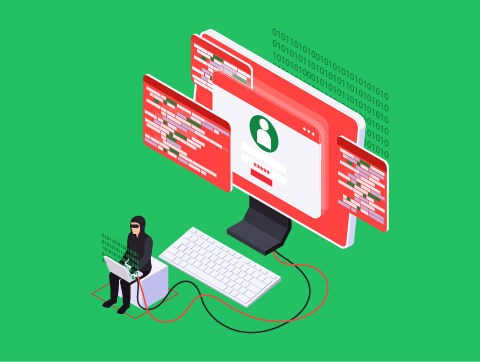Introduction
No matter how much preparation goes into preventing and responding to existing threats, some damage will still likely occur.
We judge the impact level of the damage caused by these threats by the value of the loss caused.
In this lesson, we will learn about:
- The types of impact caused by threats
- How cyber security threats vary over time

The Types of Impact
The loss a business faces from cyber security threats isn’t always financial. In fact, there are several different types of impact that may arise.
These include:
- Operational loss
- Financial loss
- Reputational loss
- Intellectual property loss
Let’s look at each of these in more detail.

Operational Loss
This refers to damages to an organisation’s operating capability, including a loss of manufacturing output, service availability, and service data.
For example, a business whose operations rely on IT systems can be prevented from performing any work due to cybersecurity threats.
Even on the manufacturing line, the machinery that builds the products will receive its instructions from computers that could be taken offline due to some threat.
Businesses that don’t rely on manufacturing but provide services and data are even more easily affected.
A denial-of-service attack could take down an online store that will prevent the business from taking and processing sales.

Financial Loss
By financial loss, we mean increased costs or reduced income caused by the threat.
Costs might include replacing damaged equipment, compensation to affected individuals, and legal fees.
Reduced income might be from losing sales due to your website being down from a malicious hack.
Compensation and legal fees result from suffering a threat. Due to improper data security, a business might need to compensate customers affected by the threat and pay data protection fines placed on it by the ICO.
Should there be a case for legal culpability, there may be legal fees to defend oneself in court.
After being hacked, Tesco Bank had to pay £2.5m in compensation to customers and faced a massive fine by the ICO.

Reputational Loss
Reputation losses refer to the loss of trust and lowered opinion of a business by people affected by a threat.
The first cause of reputational loss is the lack of service availability when a threat occurs.
If you subscribed to a website and its services regularly went down due to cybersecurity threats, this would naturally lead to questions about continuing to use it.
Another source of reputational loss is where personal data is stolen.
If customer or employee data has been stolen, you may not want them to store it in the future, as you would be concerned that they would fail to protect that data again, which could impact you.
You, therefore, may not provide them with the data they require and may instead take your business elsewhere.

Intellectual Property Loss
Intellectual property losses refer to when product designs or trade secrets are stolen, thus adversely affecting the organisation.
This may be performed by a competitor organisation as corporate espionage or an individual who wishes to blackmail the organisation or release it.
A competitor could steal product designs, for example, to release a rival product.
Stolen trade secrets will have almost the same effect, such as a competitor stealing a product’s formula so they can produce it themselves.
This loss can have huge ongoing effects on the business, leading to additional financial losses and a loss of reputation.

How Threats Vary Over Time
Cybersecurity threats vary over time as developers create new and smarter threats to counter existing infrastructure built to prevent internal and external threats.
As a result, it may be difficult to keep track of changes to the landscape.
Therefore, some cybersecurity organisations provide regular updates on old, current and new data breaches and possible new malware that has been developed.
For example, the National Cyber Security Centre produces weekly threat reports on the latest threats and vulnerabilities.
Microsoft also completes its own reports, issued in different volumes for all kinds of security intelligence.
Sophos labs runs a blog, newsletter & podcast on the latest threats.

How Threats Vary Over Time
Many blogs, news sites & technology sites provide regular updates on the cybersecurity landscape. Some of these include:
- BBC News Technology
- Wired – Threat Level
- IT Security Guru
- Troy Hunt
- The Akamai Blog
A cybersecurity professional must constantly keep themselves aware of these changing threats to be effective in their role.
Being aware of the threats from last month does not mean you are well prepared for the threats of this month.

Lesson Summary
Operational loss includes a reduction of manufacturing output, service availability and service data.
Financial loss includes compensating customers/employees, legal fees and organisational costs.
Reputation loss includes the loss of reputation due to a lack of service or the leak of employee/customer information.
Intellectual property loss includes product design and trade secret theft.
Cybersecurity threats change constantly, and it’s important to keep on top of them.
Organisations such as the National Cyber Security Centre produce reports that update on the current and changing threat landscape.
